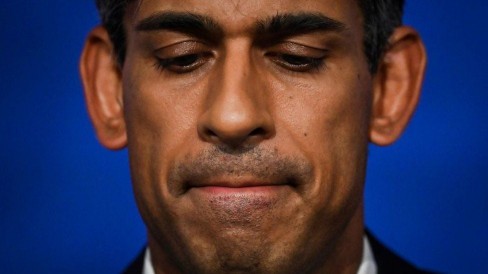
Digital Vision. / Getty Images
The Department of Education is a federal agency that administers assistance to educational institutions across the country, including K-12 schools, colleges, and universities. Its mission is to promote educational excellence and equal access through collecting data, distributing financial aid, and drawing national attention to issues and opportunities for reform.
Key Takeaways
- Created in 1979, the Department of Education administers assistance to schools and students across the country.
- The Department of Education provides funding and financial aid, conducts research, recommends reforms, and promotes equal access to education.
- The Office of Federal Student Aid, which is an office within the Department of Education, distributes financial aid to students enrolled in college, career school, and graduate school.
- Congress determines the Department of Education’s budgetary resources on a yearly basis.
How the Department of Education Works
The Department of Education (DOE) is a federal agency that establishes policy and coordinates assistance to education. The DOE’s roots trace back to 1867, when President Andrew Johnson created an education department to collect information on U.S. schools. It wasn’t until 1979, however, that Congress created the present-day version of the DOE by passing the Department of Education Organization Act.
Congress determines Department of Education funding on an annual basis. In fiscal year 2022, the DOE had $235.74 billion in budgetary resources. The largest portion of these funds went to the Office of Federal Student Aid, which provides grants, work-study, and student loans to students attending college, career school, and graduate school. The second-largest portion went to the Office of Elementary and Secondary Education, which assists with preschool, elementary, and secondary education.
While the Department of Education assists the president and Congress in enacting educational laws, it does not establish schools, develop curricula, or determine state education standards. Instead, it focuses on the following four objectives.
Provide Financial Aid
Many college, career, and graduate students interact directly with the DOE through its Office of Federal Student Aid. Federal Student Aid is the largest distributor of student financial aid in the U.S.
In academic year 2021-22, Federal Student Aid awarded $234.9 billion in grants, loans, tax credits, and work-study to undergraduate and graduate students. The average aid per undergraduate student was $15,300, while the average aid per graduate student was $27,300.
Note
Students and parents can use the Federal Student Aid website to submit the Free Application for Federal Student Aid (FAFSA), manage student loans, and apply for repayment plans and forgiveness programs, among other activities.
Collect Data and Conducts Research
The DOE collects information and statistics on education to help identify best practices. It shares its findings with educators, policymakers, parents, researchers, and the general public. Each year, the DOE publishes hundreds of publications on the state of education in the United States and related topics.
Recommend Ideas for Educational Reform
The Department of Education identifies problems in education and recommends reforms. It works with various advisory groups and organizations to gather ideas on policies and programs. The secretary of the DOE advises the president on education policies and priorities, as well as brings national attention to issues through giving speeches, writing articles, and making personal appearances.
Promote Equal Access to Education
The Department of Education is responsible for enforcing federal civil rights statutes that prohibit discimination in educational programs and activities. Laws extend to agencies, schools, colleges, libraries, museums, and other entities to ensure equal opportunity for all students and prevent discrimination on the basis of race, color, national origin, sex, disability, or age. Specific programs work to protect the rights of homeless children with disabilities, women and girls in athletic programs, and people with limited English language, among other groups.
Types of Offices in the Department of Education
The Department of Education has nine program offices, each with different primary responsibilities:
- The Office of Federal Student Aid: Administers federal financial aid to higher-education institutions and the students who attend them
- The Office of Elementary and Secondary Education: Provides leadership and financial support to state and local education agencies to maintain and improve pre-K and K-12 schools
- The Office of Postsecondary Education: Promotes access to postsecondary education; the study of foreign languages and international affairs; and international education research and exchange
- The Institute of Education Sciences: Conducts research and produces evidence on which to center education practice and policy
- The Office of English Language Acquisition, Language Enhancement and Academic Achievement for Limited English Proficient Students: Administers and recommends policies for developing instructional programs and supporting English-language learners
- The Office of Innovation and Improvement: Coordinates programs to support K-12 education, including teacher quality programs
- The Office of Safe and Drug-Free Schools: Recommends policies to promote the health and well-being of students, including drug and violence prevention programs and character and civic education
- The Office of Special Education and Rehabilitative Services: Supports programs and research designed to assist children with disabilities
- The Office of Vocational and Adult Education: Assists programs and activities designed to help adults obtain a high-school diploma or pursue postsecondary education
Frequently Asked Questions (FAQs)
What is the role of the Department of Education?
The Department of Education is a federal agency that provides funding to schools, disperses financial aid to students, collects data, conducts research, recommends reforms, and brings national attention to educational issues. It also promotes equal access to education regardless of race, sex, age, disability, or other protected characteristics.
Why was the Department of Education created?
The Department of Education was created to ensure equal access to education, promote improvement, and manage federal financial aid, among other purposes.
What are the components of the Department of Education?
The Department of Education is made up of nine program offices, including the Office of Federal Student Aid, the Office of Elementary and Secondary Education, and the Institute of Education Sciences. It’s led by the secretary of education, who is nominated by the president and confirmed by the Senate. A deputy secretary, undersecretary, and assistant secretaries in each program office also play important roles.


